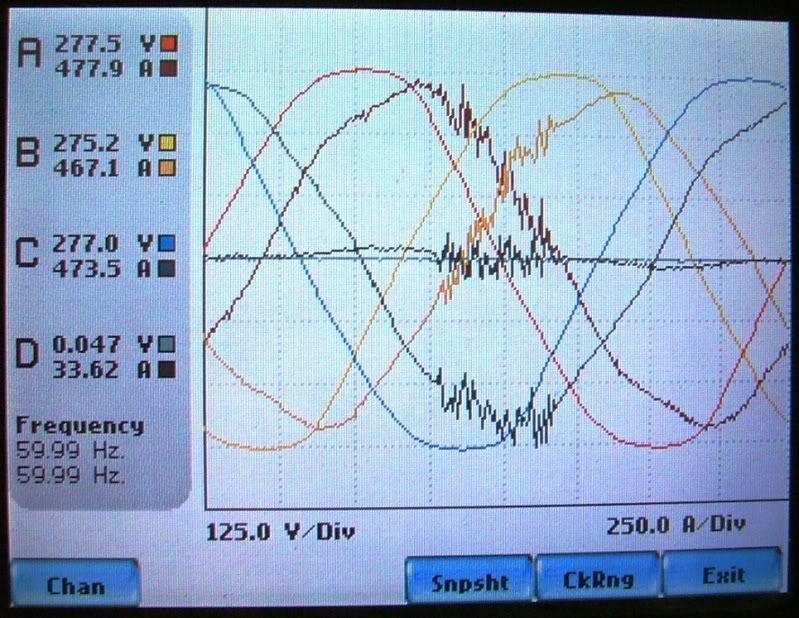- Location
- Massachusetts
I have a customer that asked me to look into an increase of 4% in their electric usage. So for the heck of it I put our PQ meter on the service and I saw a wave form I have not seen before.
A lot of current 'noise' on all thee phases and neutral during only one part of each cycle.
Can anyone identify what might be going on and if it may be effecting the KWH usage?

A lot of current 'noise' on all thee phases and neutral during only one part of each cycle.
Can anyone identify what might be going on and if it may be effecting the KWH usage?


